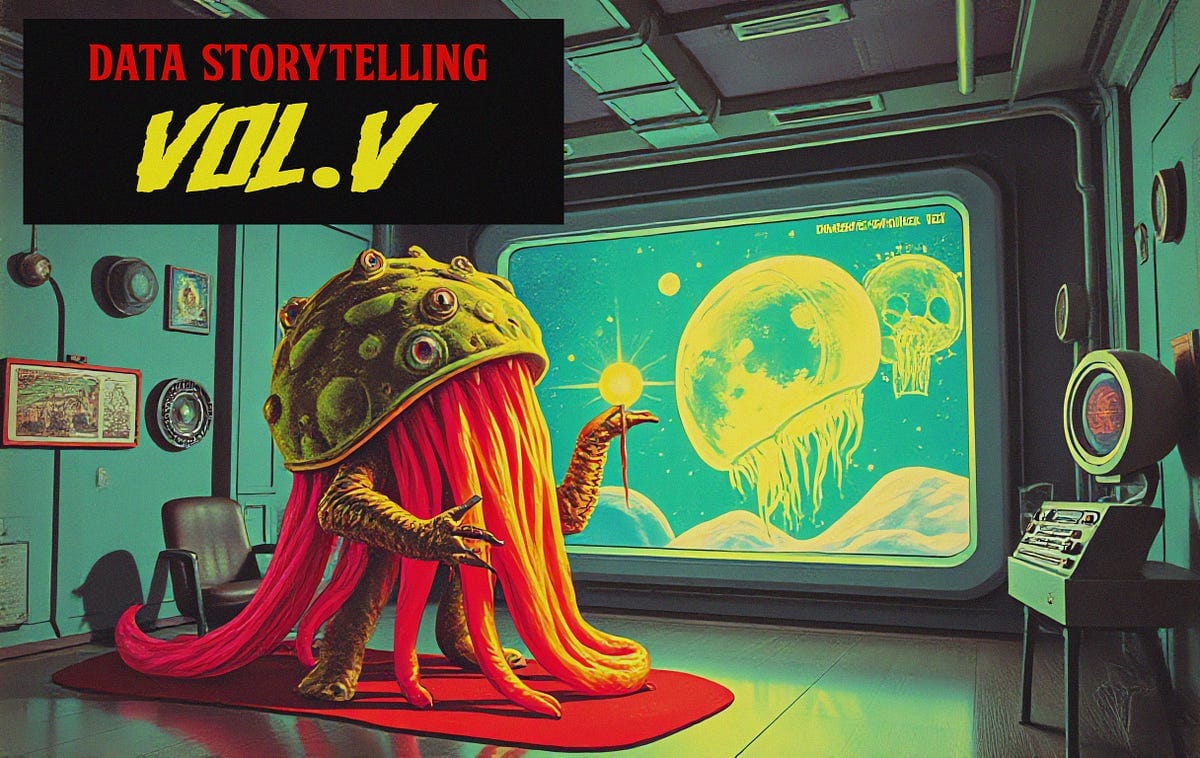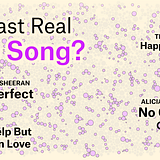Advanced Data Storytelling: From Information to Inspiration (Data Storytelling Volume V)
A Guide to Creating Meaningful Data Narratives

Introduction: The Evolution of Data Communication
If this series were a building, you’d be standing at the top floor right now, admiring the view. Over the past four articles, we’ve laid the foundation, erected sturdy walls, and polished the interiors of data storytelling. Now, in this final installment, we’re here to add the crown jewel — advanced techniques that transform your narratives into masterpieces.
Think of it this way: Data storytelling is like architecture. You start with raw materials (your data), shape it with purpose (your narrative), and add features that make it irresistible (your visuals). This last chapter isn’t just about decorating — it’s about learning from the blueprints of the best, those master builders who’ve elevated interactive storytelling to an art form.
So grab your metaphorical hard hat, because we’re diving into the techniques, tools, and case studies that will leave you inspired to build stories that truly stand tall.
The Foundation: Understanding Advanced Data Context
Data is the foundation of any story — a heap of bricks waiting to be shaped into something purposeful. Context transforms raw materials into a strong, reliable base for building insights.
Consider this scenario: Imagine a bustling city planning a new subway system to reduce traffic congestion. A lone data point might state, “Daily traffic volume has increased by 25% over the last decade.” By itself, it’s like a pile of construction materials — useful, but incomplete. However, when you layer in population growth, urban expansion, and commuter preferences, the narrative emerges: a city grappling with rapid development and the need for sustainable transit solutions. Context is the blueprint that turns isolated data points into a strong and compelling structure.
“Visualizations should guide, not overwhelm. Think of them as a tool to illuminate, not decorate.” — Alberto Cairo
Building Your Narrative Architecture
Think of your story like constructing a building. You wouldn’t start by decorating the penthouse. Strong narratives follow progressive disclosure, adding layers methodically to avoid overwhelming your audience.
Hans Rosling’s Gapminder presentations demonstrate this perfectly. He started with simple, unadorned visuals and gradually layered on complexity. Each step supported the next, much like framing walls before adding a roof. This approach ensured clarity while maintaining engagement.
“The most effective stories don’t just convey information; they inspire action by connecting to the audience’s emotions.” — Cole Nussbaumer Knaflic
The Art of Visual Design: Interior Decoration for Data
Visuals are the décor that makes your building inviting. From clean typography to deliberate color schemes, design choices create a visual language that guides your audience through your narrative.
Consider Our World in Data as an example of impeccable interior design. Its visuals transform dense statistics into approachable stories. The “Coronavirus Pandemic (COVID-19)” tracker acts like a well-lit room, clarifying critical insights without overwhelming viewers. Similarly, the “Poverty and Inequality” section humanizes complex issues, connecting numbers to stories in a way that feels both elegant and accessible.
Thoughtful design isn’t about extravagance; it’s about making a space — your narrative — welcoming and intuitive.
“Always ask yourself: What’s the story the data is trying to tell, and how can I amplify its voice without distorting its message?” — Brent Dykes
Interactive Storytelling: Laying the Groundwork for Master Builders
Interactive visuals empower your audience, handing them the blueprints so they can explore on their own. It transforms a monologue into a dialogue, inviting curiosity and discovery.
Picture yourself stepping into a construction site. Each room represents a different era of The Beatles’ music — a vivid metaphor brought to life by the “Tracking the Beatles” project. This interactive map showcases their musical evolution, much like walking through the blueprints of their artistic journey. With every click, users uncover craftsmanship and thoughtful details, turning passive observation into active engagement.
Such interactive storytelling is not just an experience; it’s an invitation to join the creative process. And as we explore the next section, we’ll look at real-world examples that demonstrate how master builders of interactive storytelling elevate their craft to inspire and educate.
Case Studies: Learning from Master Builders

Love Songs Analysis by The Pudding: This project breaks down the evolution of love songs, combining storytelling and interactive visualizations. It’s like touring an architectural masterpiece, where every detail has a purpose and connects emotionally.

Reuters’ Insect Apocalypse Visualization: Tackling environmental issues, this project uses clear, impactful graphics to balance complexity and accessibility. It’s akin to designing a functional yet stunning public space — where form meets function.
Hans Rosling’s “The Best Stats You’ve Ever Seen”: Rosling’s TED Talk demonstrates how enthusiasm and simplicity can turn dry data into something captivating, much like an architect passionately presenting their vision to a captivated audience.
Tired of Waiting in Line? An Expert Explains Queues: This video breaks down the psychology of queues with relatable anecdotes and visuals. It’s like explaining the inner workings of an elevator system in a skyscraper — something often overlooked but essential to smooth operation.
The Ethics of Data Storytelling
Just as a building must meet safety standards, ethical data storytelling ensures your narrative is both sturdy and trustworthy. It involves:
- Providing proper context
- Acknowledging uncertainties
- Being transparent about methods
- Avoiding visual tricks or distortions
Respect your audience and your data — it’s the foundation of any enduring structure.
Practical Applications and Next Steps
Ready to design your next data story? Here’s your blueprint:
- Start with your audience — what do they need to know?
- Build your story layer by layer, ensuring a solid foundation.
- Use visuals as purposeful design elements.
- Test your narrative — does it hold up under scrutiny?
Conclusion: Building Stories That Last
Data storytelling is an ever-evolving craft. While tools and trends may change, the principles of strong design — context, progression, engagement, and ethics — remain constant. Build with care, innovate with purpose, and create narratives that stand tall and inspire.
Further Reading
Expand your understanding with these resources:
- Storytelling with Data by Cole Nussbaumer Knaflic: Practical tips for effective data communication.
- The Truthful Art by Alberto Cairo: A guide to creating honest, engaging visuals.
- Good Charts by Scott Berinato: Design ethical, impactful visuals.
- Factfulness by Hans Rosling: Insights into transforming data into powerful stories.
- DataStory by Nancy Duarte: Blend data with narrative for inspiration.
- Effective Data Storytelling by Brent Dykes: Drive change with compelling data narratives.
- The Functional Art by Alberto Cairo: Explore the ethics and impact of visual communication.
- The Visual Display of Quantitative Information by Edward Tufte: A classic guide to clarity in data presentation.
References
Knaflic, C. N. (2015). Storytelling with Data: A Data Visualization Guide for Business Professionals. Wiley.
Dykes, B. (2019). Effective Data Storytelling: How to Drive Change with Data, Narrative, and Visuals. Wiley.
Cairo, A. (2016). The Truthful Art: Data, Charts, and Maps for Communication. New Riders.
